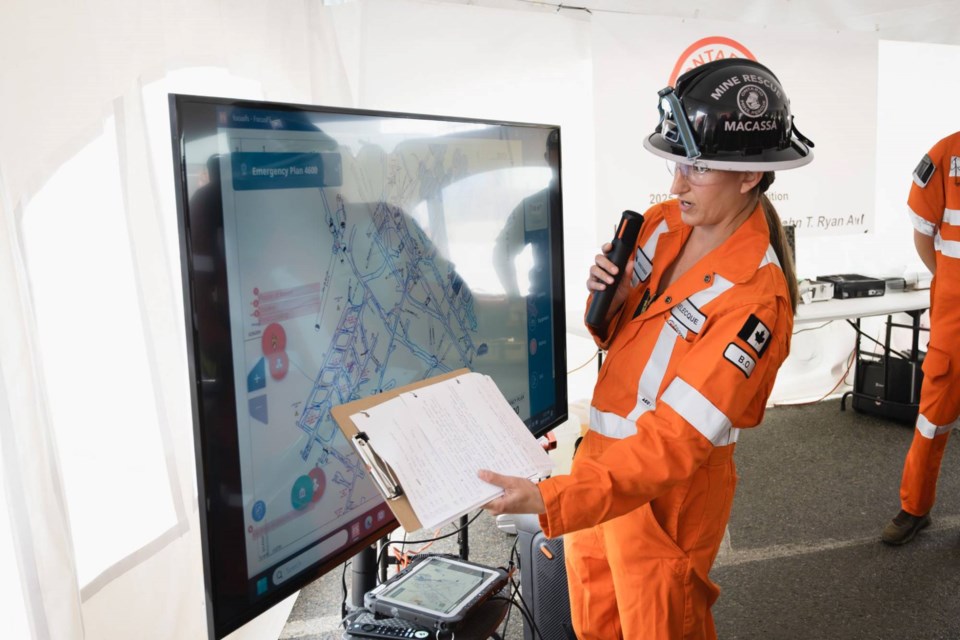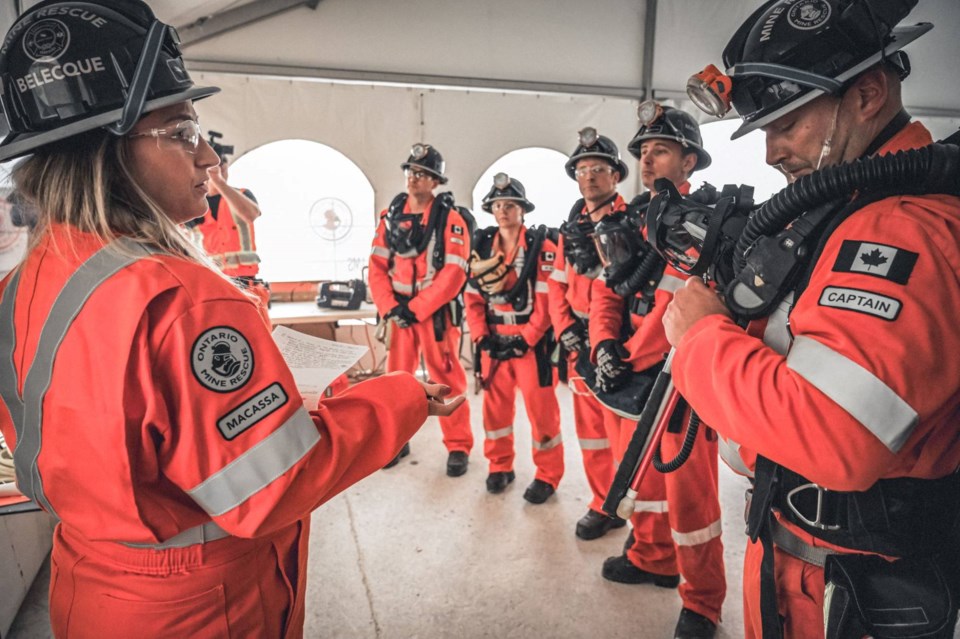April Belecque headed to university expecting her science studies to lead to a career in pharmacy.
But the experience wasn’t quite what she imagined. So, she pivoted to geology, trading prescriptions for drill results and, eventually, a mine rescue helmet.
Now, Belecque is making history as the province’s first female mine rescue officer to serve with Ontario Mine Rescue, which has been overseeing mine rescue operations across the province since 1929.
“It's an honour to be the first woman in the role, but I'm trying not to focus so much on being proud of that as I am about what is the value that I'm going to bring to Ontario Mine Rescue as the first woman in the role? What does that mean? What are the implications of that?” Belecque said.
“Hopefully young women, or people of any gender, who might feel that this wasn't something they had a previously existing skill set in, and they don't feel like they fit the mold, I feel like I'm a visible representation to people like that.”

The organization maintains a network of mine rescue stations across the province, which are staffed by mine workers who volunteer for the team. Mine rescue officers like Belecque train them in areas including emergency rescue response, firefighting, first aid, rope rescue techniques, and technical knowledge of specialized rescue tools.
In the event of a mine emergency, those volunteers are then called upon to go into often risky environments to provide aid and extract the affected workers.
Each mine pays a premium per employee to the Workplace Safety and Insurance Board (WSIB). A portion of that premium goes toward funding the Ontario Mine Rescue program, Belecque explained.
Mines are required to have a certain number of mine rescue volunteers depending on the number of employees a mine has, she added.
Belecque, who is originally from Chelmsford, outside of Sudbury, is the newest of three mine rescue officers stationed in Kirkland Lake.
“Our district is growing,” Belecque said. “We have mines that are growing, and we also have new mines opening, so we’re going to need more volunteers in our district, and therefore, we need more people to train them.”
She first got involved in mine rescue a decade ago while working in Red Lake.
Belecque had picked up some overtime hours checking for toxic gas after long-hole blasting underground — a common practice to ensure the area is safe for employees to enter, which is also often practised in mine rescue. Her frequent partner in the role was a mine rescue volunteer and his experiences piqued her curiosity.
When she moved to Kirkland Lake to begin work at Macassa Mine, she signed up for one of the open spots on their mine rescue team.
“It's all about just wanting to feel prepared,” she said of her motivation to get involved.
“If somebody's hurt, you don’t want to feel like, ‘I don't know what to do right now.’ You want to feel like you can help and you're going to do the right thing. So that was what had me so interested in joining.”
Despite her experience, Belecque almost didn’t apply for the mine rescue officer position when it came up, but she was spurred on by her supportive and encouraging co-workers.
The interview was “by far the hardest interview I’ve ever done,” she said of the multi-pronged process, but was appreciative of how thorough it was.
Among her tasks, Beleque was assessed on her answers to a series of questions about how she would respond in emergency situations; she had to give a presentation that demonstrated her teaching ability; and she had to create a rescue plan in a simulated emergency.
“From what I understand, it was a highly sought after position,” she said. “So I feel extra honoured to have been offered the job.”

Starting in the role on July 7, Belecque said she’ll now undergo a year of training before she’ll be leading a classroom on her own. That will give her time to bring up her skills to the level of the other mine rescue officers, she said, and help her figure out what she can uniquely bring to the role.
Women currently only make up about 15 per cent of workers in mining, and within that, many remain in human resources, administrative and finance roles. So those working underground and participating in mine rescue make up an even smaller percentage, Belecque added.
It’s a “hugely untapped resource” for the industry, she noted, yet very rewarding. The young mother of two is hopeful others will consider roles in the industry.
“I know that I didn't see a lot of women in roles like this when I was growing up, or at least they weren't visible to me,” Belecque said.
“So I hope that in the future, when my kids are growing up, they won't bat an eye about seeing women in roles like mine, because just hopefully in the future it’s normalized. So this is, maybe, step one in our house toward that.”




